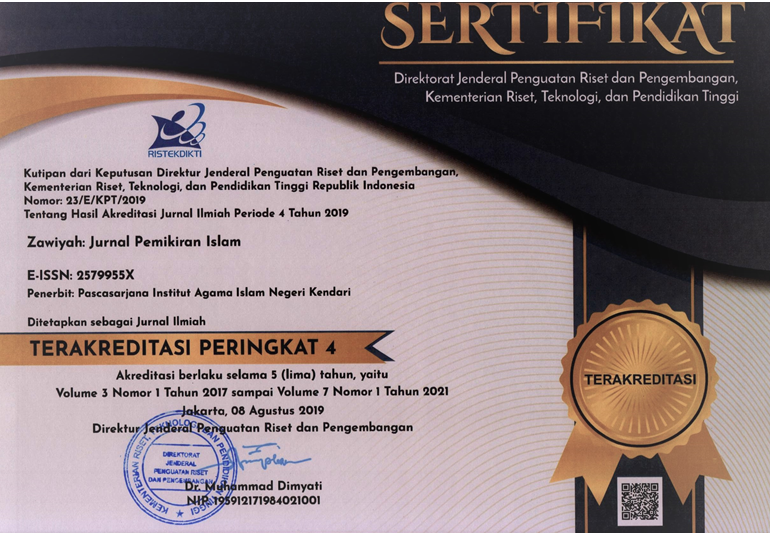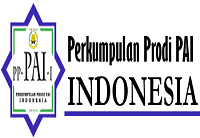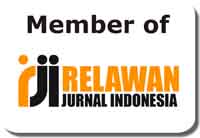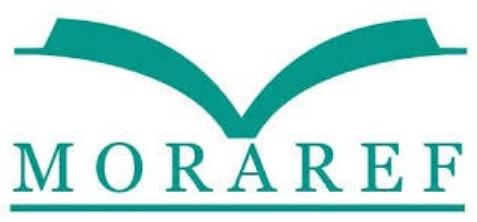KONSTRUKSI KEPEMIMPINAN PERSPEKTIF MAS}LAHAH
Abstract
This study aims to determine the construction of leadership in the perspective of maslahah. This is the development of Islamic legal thought, the theory used in this study is theory of maslahat and Sadd az\-z\ari>’ah. data collected by quoting, adapting and analyzing the literature that the relevance of the issues discussed, then all of them were reviewed and concluded. The results show that leadership must have the ability to direct the behavior of others, have certain skills that are not owned by everyone, so as to solve the problems that arise in the life of mankind. Between leaders and those who are led must establish synergic relations between the people and the government in carrying out their responsibilities. Between the two parties there was a synergy and mutual protection. Construction Leaders found several criteria, namely: (a) Principle of Deliberation (b) Justice, Preservation of absolute justice between fellow humans (c) Principle of Equality by treating something no more and no less. (d) The principle of humanity, namely everything worthy for humans to each other (e) Honesty, by proving between his words and deeds (f) Al-amanah, preserving the principle of being responsible both personally and institutionally (g) Al-tablig (openness), open openness to input from the people by absorbing all of his aspirations, (h) Al-fatha> nah (intelligence) intelligence, mastering conditions and insight, want to be under which the nation is. Privileges of a just leader because Fair is the noblest characteristic that determines the policies of a leader and even that raises the image and authority of a leader.
Full Text:
PDFReferences
DAFTAR PUSTAKA
Alqur’an dan Terjemahnya.
Abu al-Husain, Al-Qusyairiy al-Naisyaburiy Muslim bin Hajjaj. Shahih Muslim, Juz III. Beirut: Dar Ihya al-Turats al-‘Arabiy, t.th.
Al-Naisa>bu>ri, Muslim ibn al-Hajja>j , al-S}ahi>h ma’a al-Nawawi, Kitab al-Ima>rah, Bab Khiya>r al-A’immah wa Syira>ruhum, Jilid XII (Cet.I; Beirut: Da>r al-Kutub al-‘Ilmiyah, 1415 H),
Abuddin Nata, Metodologi Studi Islam. Jakarta: Raja Grafindo Persada, 2008.
Ahsin W. Al-Hafidz, Kamus Ilmu al-Qur’an Cet.I; Jawa Tengah: Sinar Grafika Offset, 2005.
Ahmad ibn Faris, Maqayis al-Lughah, Juz III. t.tp; Dar al-Fikr, t.th.
Al-Ifriqy, Muhammad bin Mukarram bin Manz}ur. Lisa>n al-‘Arab, Jilid XI. Cet. I; Beirut: Dar al-Sa}>dir, t. th.
Al-Kandahlawa>, Muhammad Yusuf. Haya>tu al-Shaha>bah, Jilid 2, Cet.I ; Ja>miah al-Azha>r: t.p, 1417 H/ 1996 M.
Al-‘Aqqa>d, Abbas Mahmud. Abqariyyatu Umar (Beirut –Syaidan : Mansyurat al-Maktbah al-Is}riyyah, t.th.
Al-Naja>r, Abd al-Wahhab. al-Khulafa ar-Rasyidun. Cet. 2; Beirut Libanon: Dar al-Kutub al-Ilmiyah, 1410 H/1990 M.
Al-Fairuzabadi, Muhammad bin Ya’qub. al-Qamus al-Muhit} , jilid III. Cet. I; Beirut: Dar al-Kutub al-Ilmiah, 1995.
Al Munawar, Said Agil Husen. al-Qur’an membangun kesalehan hakiki. cet. ke-2; Jakarta: Ciputat press, 2002.
Hilal, Judah. al-Istihsan wa al-Maslahah al-Mursalah, dalam Usbu’ al-Fiqh al-Islami (Kaherah: Lajnah al-Qanun wa al-‘ulu>m al-Syiyasiy, ed. Majlis al-‘A’la Liri’ayah al-Funu al-Ijtima’iyyah, 1330 H), h. 263.
M. Atho Mudzhar, Membaca Gelombang Ijtihad: antara Tradisi dan Liberasi (Cet.I; Yogyakarta : Titian Ilahi Press, 1998.
Mustafa Zaydi, al-Mashlahat fi al-Tayri’ al-Islami wa najm al-Dien al-Tufi. Cet. 2; Kairo : Da>r al-Fikr, 1964.
Al-Baidhawy, Nashr al-Din Abu al-Khair ‘Abdullah bin ‘Umar. Anwar al-Tamzil wa Asrur al-Ta’wil, Jilid . Mishr: Musthafa al-Bab al-Halabiy, 1939.
Departemen Pendidikan Nasional RI, Kamus Bahasa Indonesia. Jakarta: Pusat Bahasa, 2008.
Dahlan, Abdul Azis et al. Ensiklopedi Hukum Islam, Jilid 1, Jakarta: Ichtiar Baru Van Hoeve, 2006.
Ibn’Abd sala>m, al-Qawa>id al-Ahka>m fi> mas}alih al-Ana>m, jilid I. Kairo: al-Istiqamat, t. Th..
Ibn Taimiyah, Ahmad ibn Abdul Halim. al-Istiqa>mah, jilid I. Cet.I; Riya>d}: Ja>mi’atul Ima>m Muhammad ibn Sa’u>d, 1403 H
Ibn Kasir, Ismail ibn Umar. Tafsir al-Qur’an al-Az}i>m, Ed. Sa>mi Muhammad Salamah, Jilid II. Cet. II; Dar T{aybah, 1420.
Lexy J. Maleong, Metodologi Penelitian Kualitatif. Bandung: Rosdakarya, 1989.
Muhammad Ash-Shalabi, The Great Leader of Umar bin al-Khattab, Terj. Khoirul Amru Harahap dan Akhmad al- Faozan, Umar Bin Khattab: Kisah kehidupan dan Kepemimpinan Khalifah ke dua.
Muhammad Bilta>ji>, Manhaj Umar bin al-Khattab fi> al-Tasyri>’ Dira>satun Mustaw’ibatun: li fiqh ‘Umar wa Tanzi>ma>tihi, jilid 3. Cet. III; al-Qa>hirah: Da>russala>m, 2006 M/1427H.
Munawwir, Ahmad Warson. Kamus Arab-Indonesia. Surabaya: Pustaka Progressif, 1997.
Umairah, Abdurrahman. Tokoh-Tokoh yang diabadikan al-Qur’an, jilid 4. Cet. I; Jakarta: Gema Insani Press, 2002
.
Raharjo, Satjipto.Ilmu Hukum(Cet. VI; Bandung: Citra aditya Bakti, 2006),
Zaitunah Subhan, Perempuan dan Politik dalam Islam. Cet.ke-3; Yogyakarta: Pustaka Pesantren, 2006.
Sayyid Quthub, Fi Dzilal al-Qur’an, Juz V. Beirut: Dar Ihya al-Turasts al-‘Arabiy, 1967.
Al-Fairu>za>ba>di, Muhammad bin Ya’qu, al-Qa>mu>s al-Muhi>t} , jilid III. Cet. I; Beirut: Da>r al-Kutub al-Ilmiah, 1995
DOI: http://dx.doi.org/10.31332/zjpi.v4i2.1087
Refbacks
- There are currently no refbacks.
Copyright (c) 2018 St. Halimang

This work is licensed under a Creative Commons Attribution-ShareAlike 4.0 International License.
View My Stats













